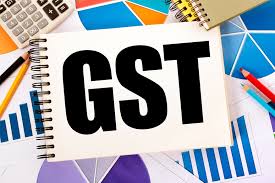Changes to GST rules in Budget the joker in the pack
The earlier concept of two-way communication between the taxpayers has been scrapped and the concept of providing the information of the GST details filed by the vendors to the taxpayer (similar to GSTR2B). This would reduce the stress on the IT infrastructure requirements of both the government and taxpayers.
The overall timeline for amendments, issuance of credit notes and debit notes as well as ITC for a financial year has been increased from 30th September to 30th November of the following year. This has been done in the line with the annual return due date of 31st December and to also reduce the burden on assesses for the 30th September which is the due date for several other regulations.
The GST registration of the assesses shall be canceled in case of non-filing of GST returns for 3 consecutive periods. This would affect the overall compliance and logistic requirement for the taxpayer as a suspension of the GST registration shall lead to the non-availability of E-way bills and ITC.
In an interesting amendment, the government has allowed the transfer of CGST cash balance from one registration to another within the same PAN and also provided refund forms and mechanisms for excess deposit of cash. Further, specific forms and regulations shall be notified to seek a refund of the cash deposited over the required amount. This would allow the taxpayers to manage their working capital requirement, in case they have cash balances stuck in a particular registration
The rules for availing Input Tax Credit (ITC) have been changed to restrict the ITC availment to the invoices provided by the authorities on the GSTN portal. i.e., in case the vendor doesn’t file its GST returns, the taxpayers shall not be allowed to avail the ITC. This has been done to encourage compliance by increasing the governance by the industry on each other, which would be in line with the original idea of GST. On the positive side, the government has reduced the interest on wrong availment and utilization from 24 percent to 18 percent.
The time limit for availing the ITC for a financial year has been increased from 30th September to 30th November of the following year to be streamlined with the overall change in timelines.
Furthermore, the government now can control the amount of ITC that can be utilised to pay the output liability of GST. As per the proposed amendment, the government may notify the amount or percentage of GST ITC that can be used to set off the outstanding liability. The said provision may have been introduced to control the cash flow requirements of the government or control the pricing of products in certain industries, however, this is detrimental and against the logic of GST that is based on the concept of Value-Added Taxation.
The overall budget seems to encourage compliance and self-governance in the country. There should have been parity of taxation of the Virtual Digital Asset in Income tax and GST. The infrastructure building budget could have been expanded by giving tax breaks in the form of refunds and deductions. The said budget may not address the overall inflation and unemployment issues in the country nor encourage young entrepreneurs.\
Download our App to get knowledge updates: https://play.google.com/store/apps/details?id=com.app.gstmitra




Comments
Post a Comment